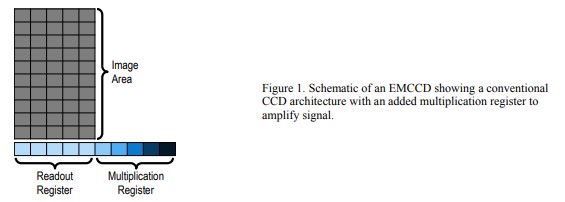Detector Performance for the FIREBall-2 UV Experiment
ABSTRACT
We present an overview of the detector for the upcoming Faint Intergalactic Red-shifted Emission Balloon (FIREBall-2) experiment, with a particular focus on the development of device-integrated optical coatings and detector quantum efficiency (QE). FIREBall-2 is designed to measure emission from the strong resonance lines of HI, OVI, and CIV, all red-shifted to 195-225 nm window; its detector is a delta-doped electron multiplying chargecoupled device (EM-CCD). Delta-doped arrays, invented at JPL, achieve 100% internal QE from the UV through the visible. External losses due to reflection (~70% in some UV regions) can be mitigated with antireflection coatings (ARCs). Using atomic layer deposition (ALD), thin-film optical filters are incorporated with existing detector technologies. ALD offers nanometer-scale control over film thickness and interface quality, allowing for precision growth of multilayer films. Several AR coatings, including single and multi-layer designs, were tested for FIREBall-2. QE measurements match modeled transmittance behavior remarkably well, showing improved performance in the target wavelength range. Also under development are ALD coatings to enhance QE for a variety of spectral regions throughout the UV (90-320 nm) and visible (320-1000 nm) range both for space-based imaging and spectroscopy as well as for ground-based telescopes.
1. FIREBALL-2
The Faint Intergalactic Red Shifted Emission Balloon (FIREBall-2) is a balloon-borne UV spectrograph funded jointly by NASA and CNES. Briefly, FIREBall-2 is designed to observe emission from the circumgalactic medium (CGM), the diffuse gas around galaxies. The primary targets include line emission from HI (Lyman-D, 121.6 nm) at a redshift of z=0.7; OVI (103.3 nm) at z=1.0; and CIV (154.9 nm) at z=0.3. The instrument is optimized for narrowband observations spanning the stratospheric window (200-210 nm) centered at 205 nm. FIREBall-2 is a follow on to FIREBall-1, which was launched on two separate occasions in 2007 and 2009.1–4 FIREBall-1 was a technical and engineering success, but elucidated the need for lower detection limits and FIREBall-2, resulting in changes to the spectrograph design and the detector. The focus of this manuscript is on the FIREBall-2 detector, specifically development of Electron Multiplying CCDs (EMCCDs) with unprecedented quantum efficiency (QE) within the FIREBall-2 observation band. Details of the spectrograph design and detector noise performance are provided elsewhere, including within these Proceedings.5,6
2. FIREBALL-2 DETECTOR
The FIREBall-2 detector development is a collaborative effort shared between the Jet Propulsion Laboratory (JPL), the California Institute of Technology, and Columbia University. The detector is based on e2v’s CCD201-20, an electron multiplying charge-coupled device (EMCCD). EMCCDs are conventional CCDs in which one of the register phases is replaced with a high voltage (40-50 V) gain register that multiplies charge prior to readout (Figure 1).7 Depending on the applied voltage, EMCCDs can amplify electron signals by several thousand times, effectively eliminating read noise by allowing the device to operate as a photon counter.8,9 EMCCDs are well suited for the FIREBall-2 experiment, which will map faint targets.

Для продолжения чтения вы можете скачать полную версию материала по ссылке ниже